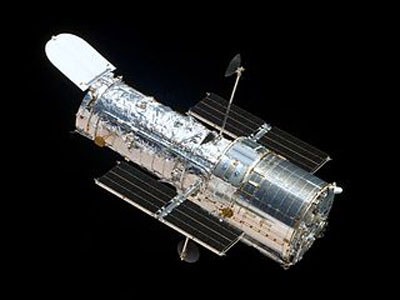GJ1214b, shown in this artist's view, is a super-Earth orbiting a red dwarf star 40 light-years from Earth. Credit: NASA, ESA, and D. Aguilar (Harvard-Smithsonian Center for Astrophysics)
NASA’s Hubble Space Telescope has released captivating images of a new class of ‘waterworld’ extrasolar planet 40 light years from Earth that astronomers are calling GJ1214b.
Apparently the planet, known as the ‘super-Earth’, is smaller than Uranus but larger than Earth. The scientists said it represents a new type of planet, like nothing seen in our solar system or any other planetary system known.
Hubble Space Telescope observations have revealed that GJ1214b is a waterworld “enshrouded by a thick, steamy atmosphere”.
Zachory Berta of the Harvard-Smithsonian Center for Astrophysics (CfA) and colleagues made the observations of planet GJ1214b.
“GJ1214b is like no planet we know of,” Berta said. “A huge fraction of its mass is made up of water.”
2009 – first discovery of GJ1214b
However, GJ1214b itself was first discovered in 2009. The discovery of the planet was made at the time by the ground-based MEarth Project, led by CfA’s David Charbonneau.
So here’s a little bit more about GJ1214b. NASA’s Hubble said this “super-Earth” is about 2.7 times the Earth’s diameter and weighs almost seven times as much. It orbits a red dwarf star every 38 hours at a distance of 1.3m miles, giving it an estimated temperature of 450 F.
It was back in 2010 that Jacob Bean, a CfA scientist, and his colleagues reported that they had measured the atmosphere of GJ1214b, finding it likely that it was composed mainly of water.
At the time, however, they said their observations could also be explained by the presence of a planet-enshrouding haze in GJ1214b’s atmosphere.

Named after the astronomer Edwin Hubble, the Hubble Space Telescope was carried into orbit in 1990 by a NASA space shuttle. The telescope remains in low-earth orbit. It is a 2.4-metre aperture telescope. Hubble’s four main instruments observe in the near ultraviolet, visible, and near infrared
Following the 2010 research, Berta and his colleagues at CfA starting using Hubble’s Wide Field Camera 3 (WFC3) to study GJ1214b when it crossed in front of its host star.
They said that during such a transit, the star’s light is filtered through the planet’s atmosphere, giving clues to the mix of gases.
“We’re using Hubble to measure the infrared colour of sunset on this world,” Berta said.
Steamy atmosphere
Apparently, hazes are more transparent to infrared light than to visible light, so the Hubble observations can help tell the difference between a steamy and a hazy atmosphere.
The scientists said they found the spectrum of GJ1214b to be “featureless” over a wide range of wavelengths, or colours. The atmospheric model most consistent with the Hubble data is a dense atmosphere of water vapour, they said.
They said the internal structure of GJ1214b would be an “extraordinarily different” one to planet Earth’s internal world.
“The high temperatures and high pressures would form exotic materials like ‘hot ice’ or ‘superfluid water,’ substances that are completely alien to our everyday experience,” Berta said.
The theory is that GJ1214b formed farther out from its star, where water ice was plentiful, and migrated inward early in the system’s history.
A paper reporting the findings of the CfA astronomers has been accepted for publication in The Astrophysical Journal.